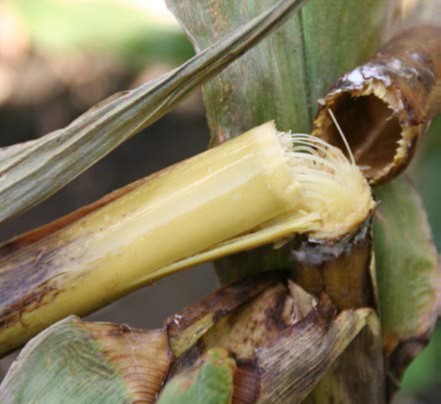
It is now time to evaluate fields for any stalk or ear rot symptoms. This will aid in making assessments about field harvest order and if there is a risk of mycotoxin contamination.

It is now time to evaluate fields for any stalk or ear rot symptoms. This will aid in making assessments about field harvest order and if there is a risk of mycotoxin contamination.
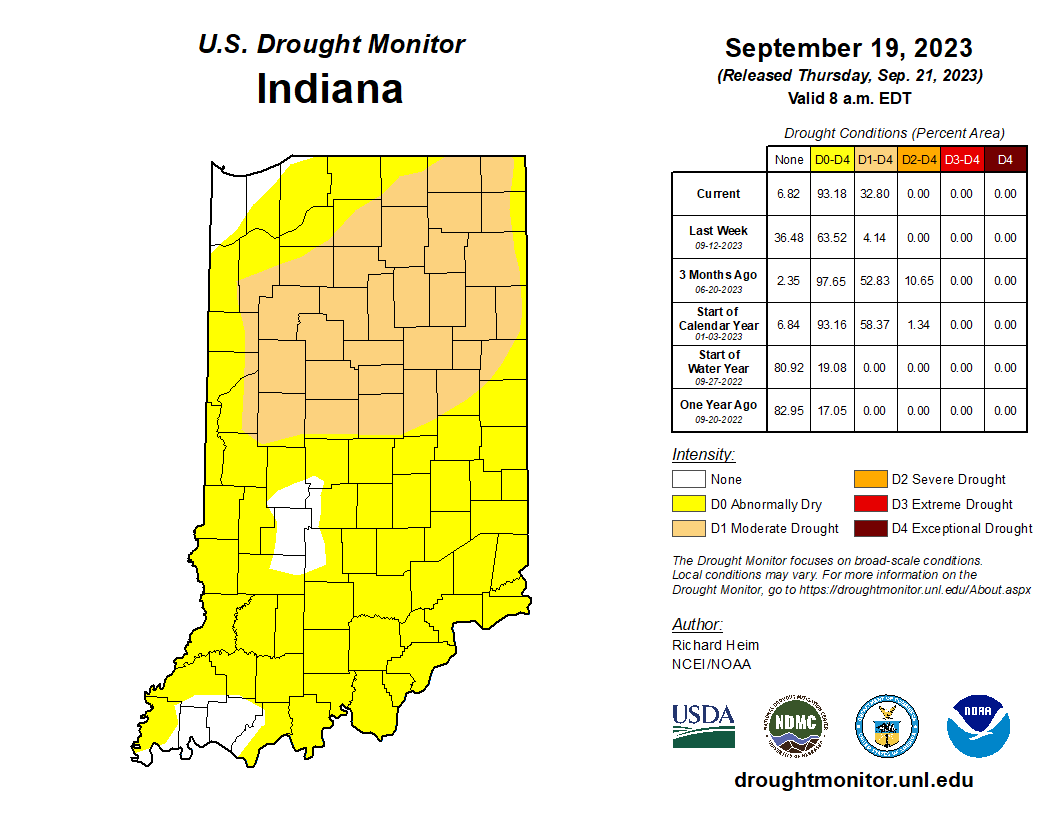
Our dry spell continues. Sure, there’s been a few passing showers, but Indiana is quickly seeing impacts magnify from the lack of rain.
The following is a link to a simple, short online survey.
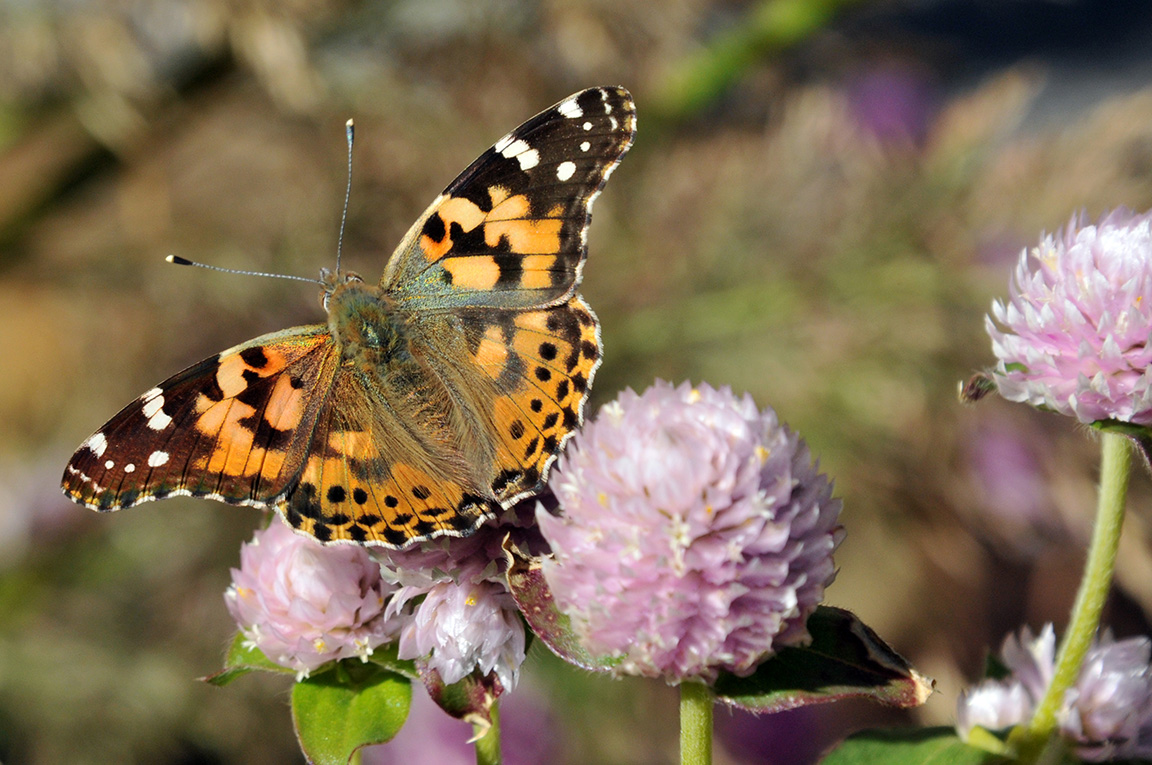
This is a wonderful time of the year in the Hoosier state, as we drive through the countryside, we are greeted with the pleasing sight of several colorful butterfly species gliding across and roads, near puddles of water, or on fall flowering plants.
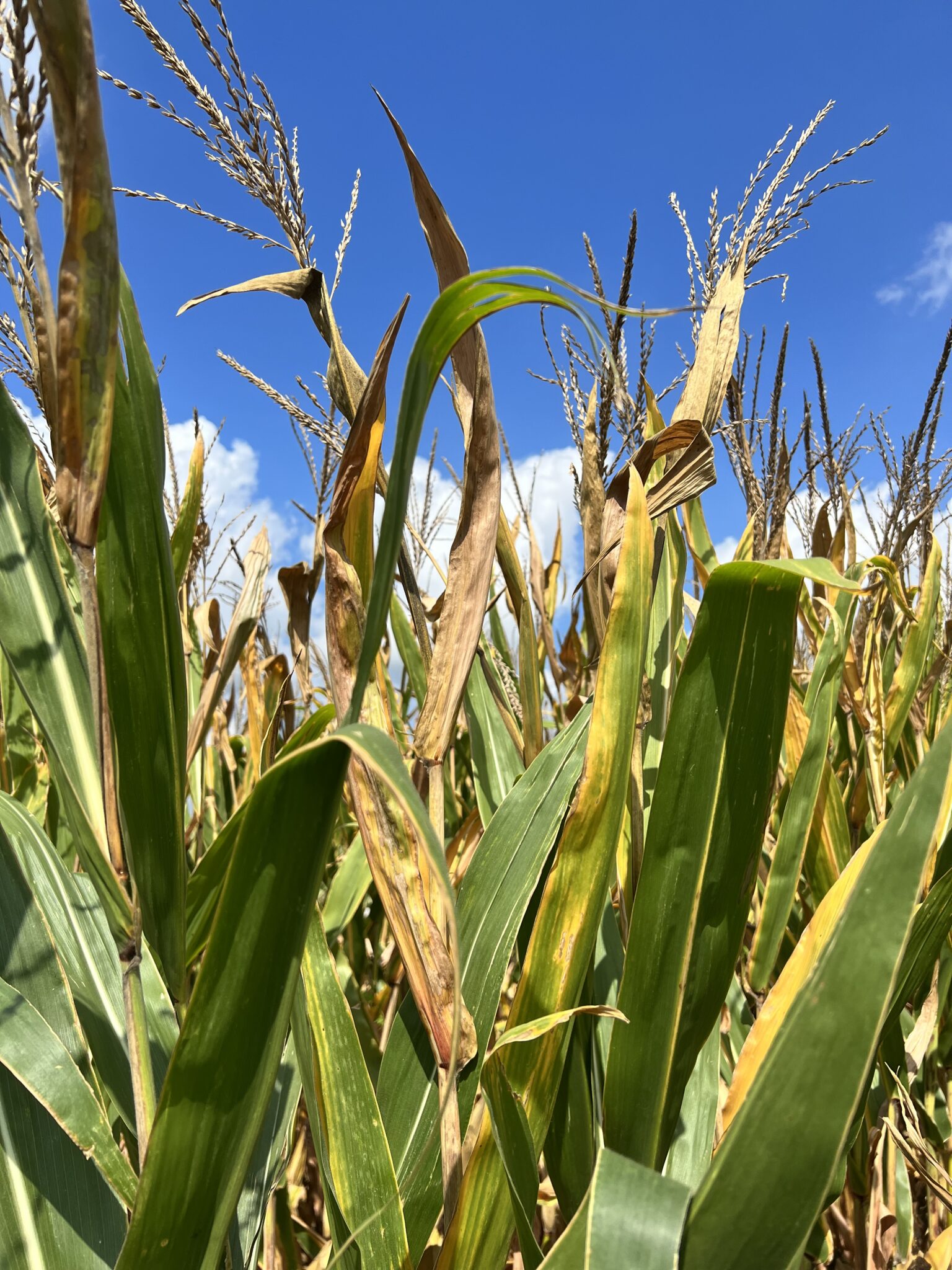
As corn plants progress through grain fill and approach maturity, plant leaves naturally begin to senesce or die.

The fall crisp was in the air this morning (9/13), so cool that I had to grab that sweatshirt I bought in mid-August while getting my kiddo on the bus.
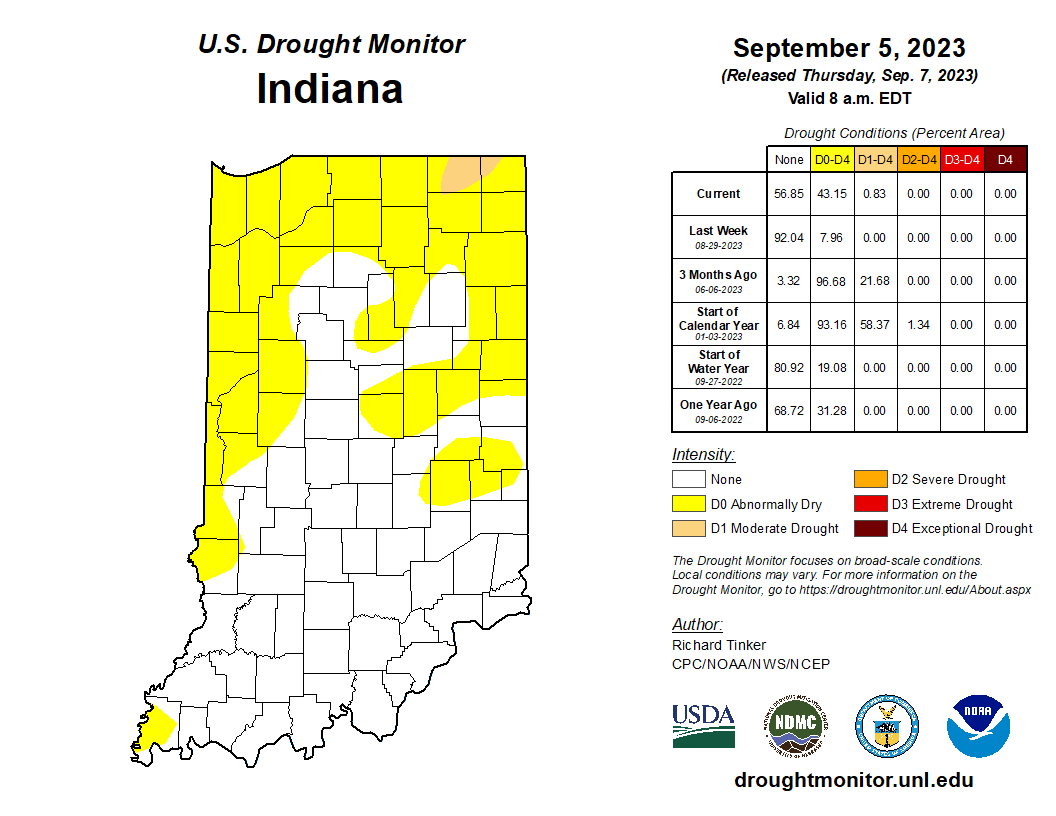
Wednesday, September 6th was the first day in what seemed like a long, long time, that rain fell across most of Indiana.
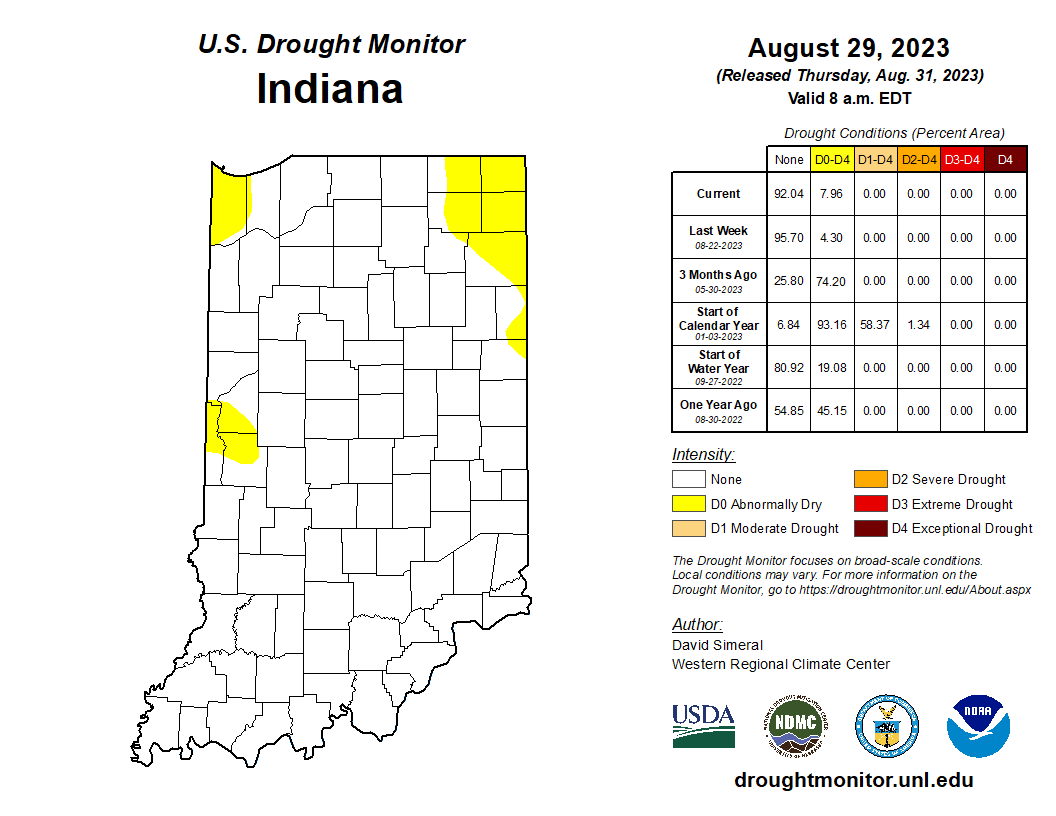
We were on a good stretch where consistent and sometimes too much rainfall eliminated drought throughout Indiana.
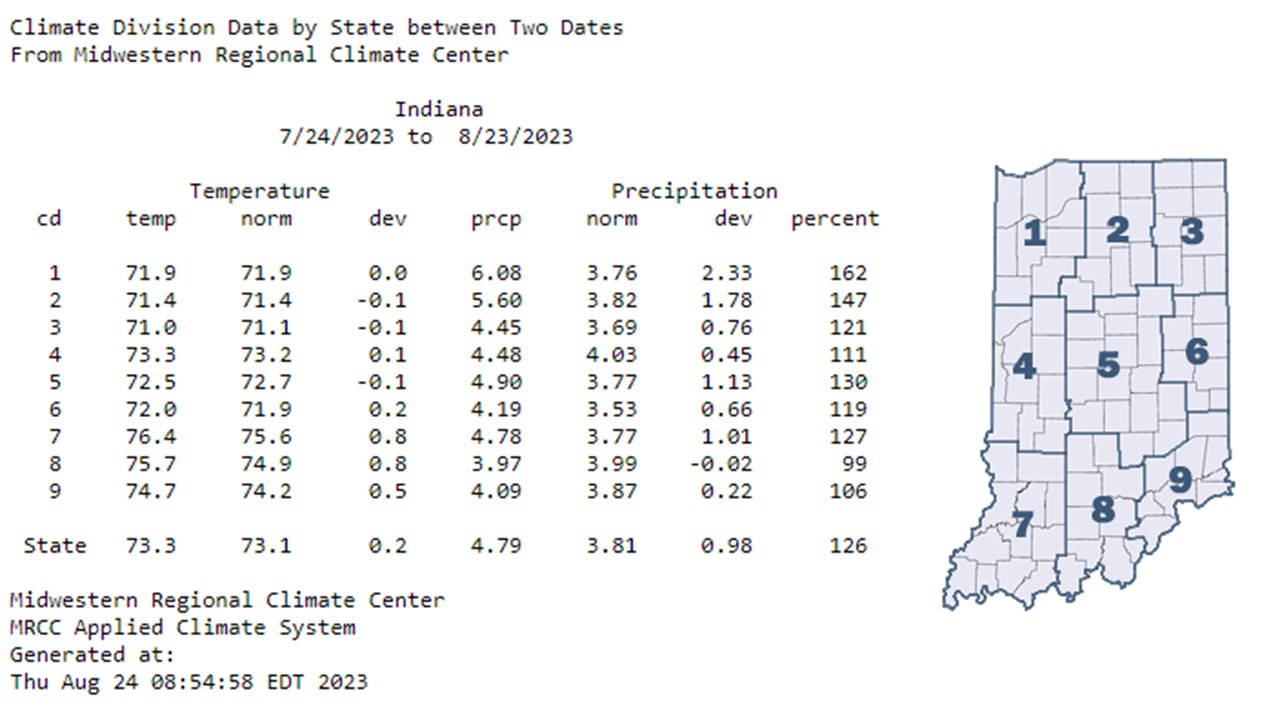
Have you ever heard of the song by Glenn Frey, “The Heat Is On”? No pun intended, but the heat is certainly on!
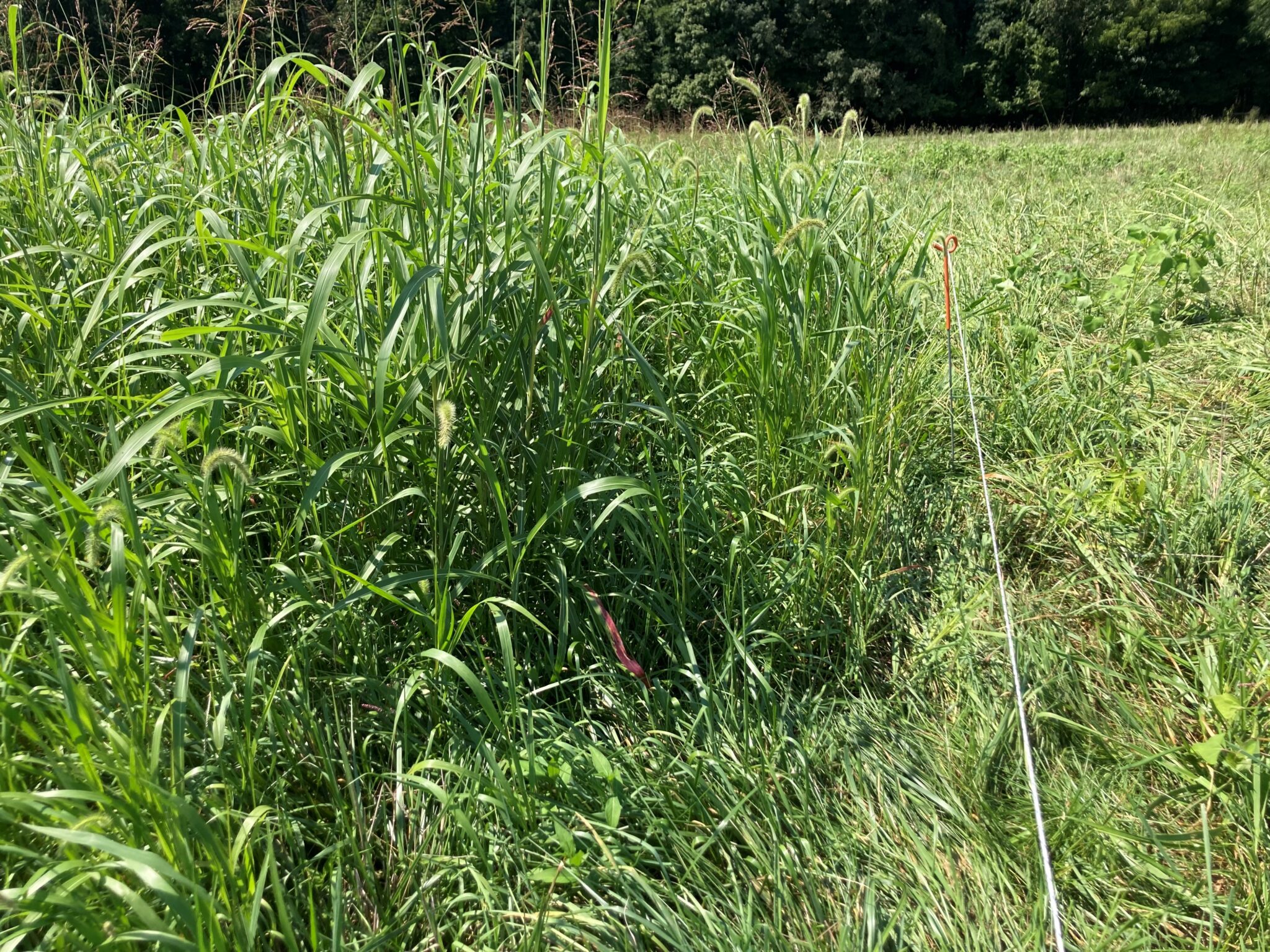
Hard to believe, especially after this week, but fall and cooler temperatures will be here in less than a month.
© 2025 Purdue University | An equal access/equal opportunity university | Copyright Complaints | Maintained by Pest&Crop newsletter
If you have trouble accessing this page because of a disability, please contact Pest&Crop newsletter at luck@purdue.edu.